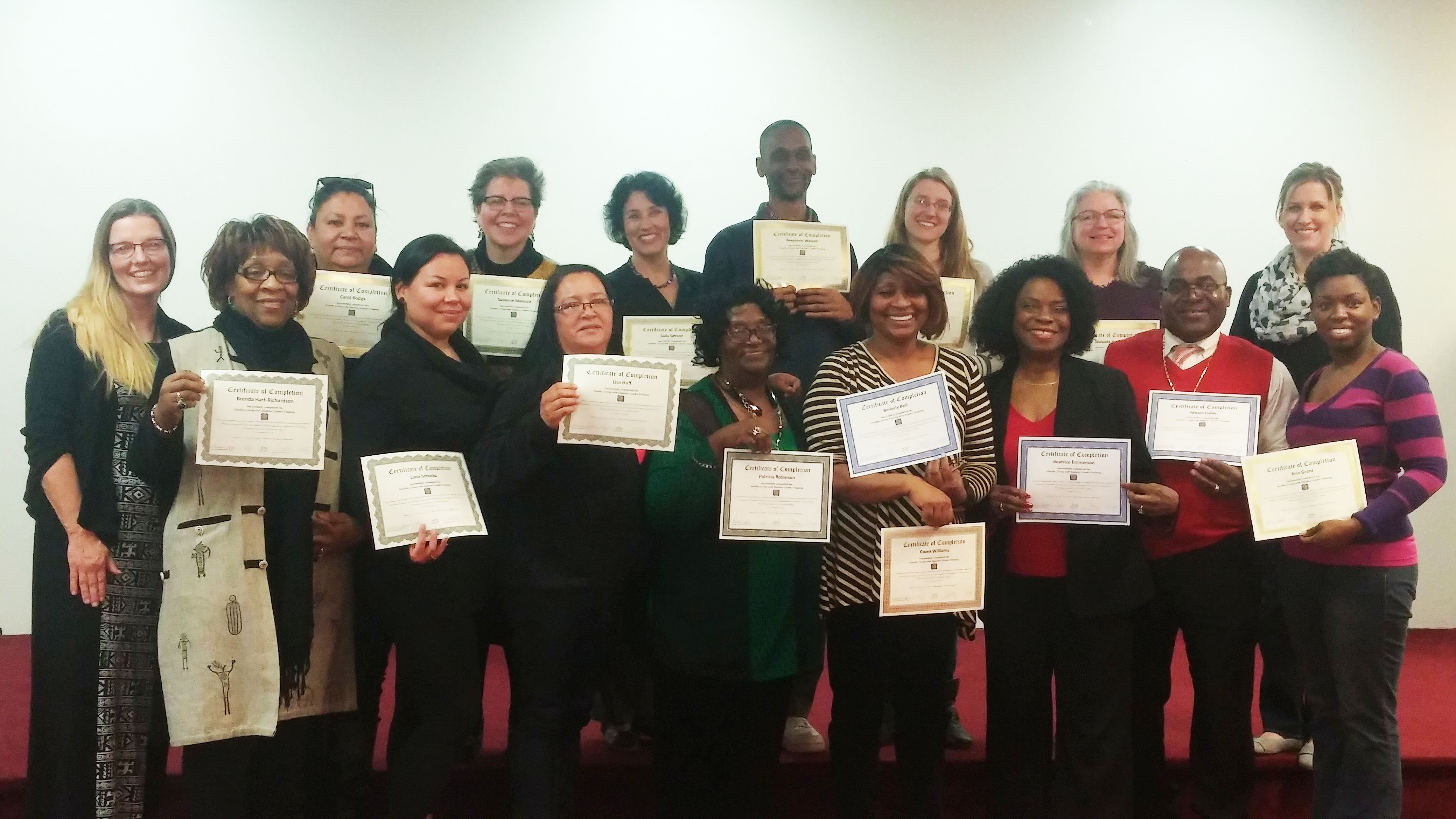- Chronic Conditions
- Diabetes
- Disparities
- Dissemination and Implementation
- HIP Data
- Prevention
- Quality and Safety
Lead Investigator
Areas of Impact
Overview
To prevent the complications of diabetes in older adults, we have enhanced individuals’ ability to manage their own diabetes for over 5,000 Wisconsin residents participating in our Healthy Living with Diabetes workshops in community settings across 52 counties and tribal areas in Wisconsin. We have also adapted our program for African American, Hispanic, and Native American populations and currently support 30 health workers from these communities as active leaders in Healthy Living with Diabetes and 25 community health workers as active leaders in the Spanish version, Vivir Saludable con Diabetes.
The Clinical Problem
The State of Wisconsin is currently in the midst of an overwhelming diabetes epidemic. It is estimated that 9.1% of the state population is living with diabetes, with a 13% increase in diagnoses from 2008 to 2011 alone. The rate is much higher for adults over age 65 and in communities of color.
Diabetes rates in Wisconsin
Diabetes complications and costs
Diabetes can lead to severe and costly complications, such as amputations, cardiovascular disease, end-stage renal disease, blindness, and other problems that dramatically effect quality and longevity of life. Each year, diabetes and its complications costs Wisconsin $5.5 billion in direct and indirect costs.
Our Response
Launch of Healthy Living with Diabetes
As management of diabetes lies almost entirely in the hands of those who live with the condition, it is vital that individuals with diabetes have the resources they need for effective self-management.
To help address the diabetes epidemic and provide these resources to individuals in Wisconsin, in 2013 the Wisconsin Institute for Healthy Aging (WIHA) launched the Healthy Living with Diabetes Program with support from the University of Wisconsin Health Innovation Program (HIP). Through funding to the Health Innovation Program from the Wisconsin Partnership Program, the Healthy Living with Diabetes Program targets individuals in both community and clinical settings.
“Tackling diabetes is a challenge for our healthcare systems and for our entire community. It’s exciting to support and help grow evidence-based programs that benefit people with diabetes who live here in Wisconsin.” — Dr. Maureen Smith, Director of HIP and Professor, UW-Madison Departments of Population Health Sciences and Family Medicine & Community Health
Program Format and Goals
 This group-based diabetes self-management program is effective and well-established. Assessments of the program nationally have shown a 53% reduction in emergency department visits; improvements in A1c, self-rated health, and communication with physicians; and reductions in health distress and symptoms of hypo- and hyperglycemia.
This group-based diabetes self-management program is effective and well-established. Assessments of the program nationally have shown a 53% reduction in emergency department visits; improvements in A1c, self-rated health, and communication with physicians; and reductions in health distress and symptoms of hypo- and hyperglycemia.
To learn more about the program format, visit the Wisconsin Institute for Healthy Aging website.
“Volunteering as a facilitator for Healthy Living with Diabetes helps me keep the importance of my health at the forefront of my life. As someone who lives with diabetes, I have found it is important to know that I am not alone.
I feel the class is motivating and helps me stay on top of managing my diabetes. It also makes me feel good knowing that I am able to help others. Diabetes is a lifelong journey and I feel if I can successfully help people through a part of it, I am positively giving back to my community!”
— Volunteer Trainer, Healthy Living with Diabetes
The goal of the program is to enhance patients’ self-efficacy using skill building, goal setting, and reinforcement, and it is highly interactive, emphasizing action planning and problem solving. Most of the learning in the workshop comes from sharing and helping others in the workshop with similar challenges. The program does not replace a patient’s existing treatments; instead, it compliments their current medical treatment plan.
Lasting Impact
The Healthy Living with Diabetes program has had over 5,000 participants in more than 400 workshops across 52 counties and tribal areas in Wisconsin; 43 workshops have been held in Spanish. People who have taken the workshop have been shown to have better health and increased confidence in managing their diabetes, improvements in their blood sugar levels and A1c, and fewer doctor and emergency room visits, among other benefits.
Our Leader Trainings have resulted in over 350 Leaders (45 Spanish-speaking) who are able to facilitate the Healthy Living with Diabetes workshops. We have adapted our program for African American, Hispanic, and Native American populations and currently support 30 health workers from these communities as active leaders in Healthy Living with Diabetes and 25 community health workers as active leaders in the Spanish version, Vivir Saludable con Diabetes. We are also implementing a statewide system of referrals from health systems to Healthy Living with Diabetes workshops.
Currently, the Health Innovation Program and WIHA are working with health systems to increase provider recommendations into the Healthy Living with Diabetes workshops, along with evaluating participant data to assess and improve dissemination of the program.

